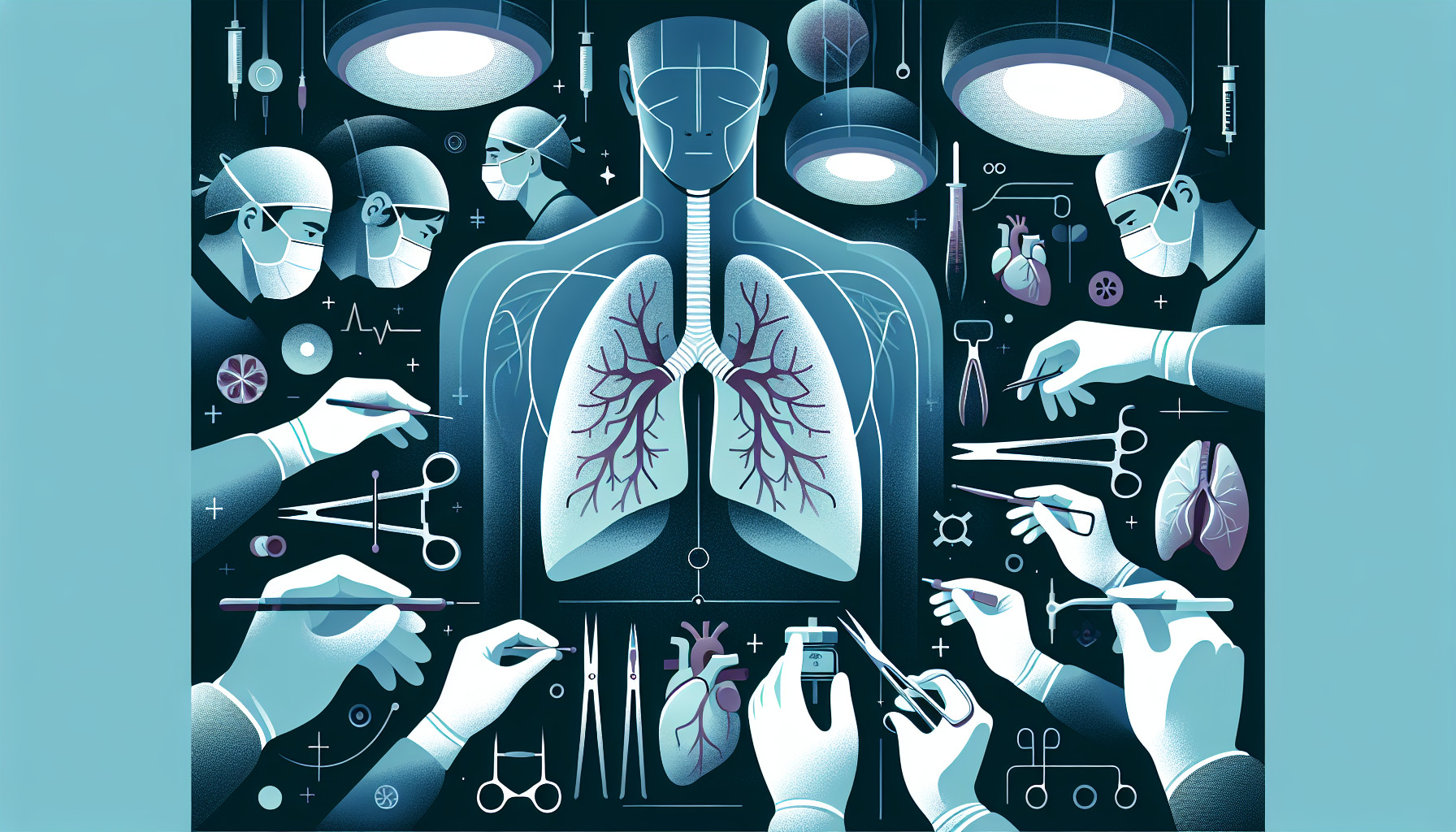Our Summary
This research paper discusses the topic of lung transplantation, a surgical procedure carried out to treat severe and irreversible lung diseases, excluding lung cancer. The procedure is becoming increasingly common in Spain, where over 3,500 lung transplants have been performed.
The paper reviews different types of lung transplants, explaining when they are needed and when they should be avoided. It also discusses the transplant procedures themselves, as well as the treatments used to suppress the immune system after surgery to prevent the body from rejecting the new lung. The authors also cover the side effects of these treatments and how they interact with other medications.
In addition to this, the paper surveys the current preventative measures in place for lung transplant patients. The authors also provide a list of references, mostly from Spanish authors, for readers who want to explore the topic in more detail.
FAQs
- What conditions are typically treated with a lung transplant?
- What are the common side effects and medical interactions of immunosuppressive treatments after lung transplant?
- How many lung transplants have been performed in Spain and what is the rate of this procedure?
Doctor’s Tip
One helpful tip a doctor might tell a patient about lung transplant is to carefully follow the prescribed immunosuppressive medication regimen. These medications are essential to prevent rejection of the transplanted lung, but they can also have side effects and interactions with other medications. It’s important to take them as directed and communicate any concerns or changes in your health to your healthcare team.
Suitable For
Patients who are typically recommended for lung transplant are those with terminal and irreversible pulmonary diseases that have not responded to current medical treatment. Some common indications for lung transplant include cystic fibrosis, pulmonary arterial hypertension, and bronchiolitis obliterans syndrome. Patients must also meet specific criteria such as good physical condition, absence of active infections, and absence of significant comorbidities that would impact the success of the transplant. Additionally, patients must be willing and able to comply with the rigorous post-transplant care regimen, including taking immunosuppressive medications to prevent rejection of the donor lung.
Timeline
Before lung transplant:
- Diagnosis of terminal and irreversible pulmonary disease
- Exhausting all other medical treatments with no improvement
- Evaluation by a transplant team to determine eligibility for transplant
- Placement on the transplant waiting list
- Waiting for a suitable donor match
- Pre-transplant medical evaluations and tests
After lung transplant:
- Surgery to remove diseased lungs and replace them with healthy donor lungs
- Recovery in the hospital for several weeks
- Immunosuppressive medications to prevent rejection of the new lungs
- Regular follow-up appointments with the transplant team
- Rehabilitation and physical therapy to regain strength and lung function
- Monitoring for potential complications such as infection, rejection, or side effects from medications.
What to Ask Your Doctor
What are the specific criteria for being considered a candidate for a lung transplant?
What are the different types of lung transplants available and which would be most appropriate for my condition?
What are the potential risks and complications associated with a lung transplant?
How long is the recovery process after a lung transplant and what can I expect during this time?
What medications will I need to take post-transplant and what are the potential side effects?
How often will I need to follow up with my transplant team after the surgery?
What lifestyle changes will I need to make after a lung transplant?
What are the success rates for lung transplants and what factors can affect the overall outcome?
How will a lung transplant impact my overall quality of life?
Are there any alternative treatment options to consider before proceeding with a lung transplant?
Reference
Authors: Zurbano L, Zurbano F. Journal: Semergen. 2017 Sep;43(6):457-462. doi: 10.1016/j.semerg.2016.11.004. Epub 2017 Jan 24. PMID: 28129961
